Amazon Storefront Optimization Tips to Skyrocket Your eCommerce in 2024
Amazon storefront optimization can skyrocket your eCommerce business. Here's how to do it well.
Updated November 7, 2024

With millions of sellers contending for a piece of Amazon’s expansive customer base, growing a brand on Amazon can be challenging. However, there is a way to set yourself apart from the competition: Amazon storefront optimization.
Not only does having a storefront increase your chances of attracting and converting potential customers, but it also allows you to showcase your brand and selection of products in a visually appealing and easy-to-navigate way. Most brands only focus on optimizing their Amazon product listings and ignore their store page.
Optimizing your Amazon store display for product search can help you boost your brand's visibility and skyrocket your sales.
In this article, we'll explore the concept of an Amazon storefront, its significance for your brand, and how you can create and optimize one to maximize your brand visibility and be successful on the Amazon platform.
Meet the expert
Mina is a multiple seven-figure seller in the supplement industry, investor, Amazon PPC expert, and founder of the Trivium Group, an Amazon Advertising agency. He has consulted over 400 brands and 3 aggregators worth $1.2 billion combined.
What is an Amazon storefront?
An Amazon storefront is a dedicated page on the Amazon platform that showcases your brand and products in a personalized “mini-website” format.
Store displays are fully customizable and enable brand-registered professional sellers to create a unique customer experience by showcasing their entire product catalog in a single location with branding and logos.
Distinct from the typical listings, with an Amazon Storefront, sellers can tell their brand story, highlight product offerings and engage with potential customers.
Why is an Amazon storefront important?
Amazon Storefronts offer brands of all sizes a personalized and branded page to showcase their entire product range, free from competition and unwanted ads. This helps them stand out and simplifies the discovery process for customers to find other products in their catalog.
Brand awareness
An Amazon storefront positively impacts building brand awareness and credibility on the Amazon platform. With customizable content, high-quality images, and videos, brands on Amazon can connect with customers on a deeper level.
By showcasing their brand story and products, a store display builds consumer confidence and increases brand recognition and customer loyalty.
Amazon URL
Having a dedicated Amazon storefront provides you with a custom, Amazon.com/yourbrand, URL, making it easier for customers to find and remember your brand on the platform. This helps drive direct traffic to your store and boosts your brand's discoverability.
Optimize your campaigns
Amazon Storefronts provide valuable analytics, so you can get insights into traffic sources, sales data, page views, and other valuable metrics. These analytics empower you to make informed decisions, identify trends, and tailor your advertising strategy to maximize your store's performance and improve your conversion rates.
Tap into Amazon traffic
Amazon has huge traffic volumes, with millions of customers browsing the platform daily. By optimizing your store display, you can tap into this existing traffic and attract potential customers who may not have discovered your brand otherwise.
Integrated promotion
An Amazon storefront allows you to integrate different promotional strategies such as coupons, deals, and exclusive offers. This enables you to create a sense of urgency and incentivize customers to make a purchase, further boosting your sales velocity and revenue.
Takes customers away from competition
An Amazon storefront helps divert customers' attention away from competitors by providing a dedicated space for your brand. It creates a unique and immersive shopping experience, increasing the chances of customers sticking with your brand throughout their purchase journey.
Disadvantages of Amazon storefront
While an Amazon storefront offers numerous advantages for brands, it is important to be aware that some disadvantages must be considered.
Many different product categories
An Amazon storefront needs to be linked to a specific product category. This requirement can restrict the flexibility and customization options for your store display. Since the store is tied to a particular category, it may limit your ability to showcase a diverse range of products or expand into different categories. This can be a drawback for brands that offer various products.
Very high standards
Amazon has stringent standards for storefront approval. Your store display must meet their guidelines, ensuring high-quality content, imagery, and a seamless user experience. Failure to meet Amazon Terms of Service can result in the rejection or suspension of your storefront.
Does not necessarily improve Amazon SEO
While an Amazon storefront enhances your brand's visibility and customer engagement, it does not directly impact your Amazon search engine optimization (SEO). To improve organic traffic and search rankings, it's essential to mix your store display efforts with product title and relevant keyword optimization.
You need a registered, trademarked brand name
You must have a registered and trademarked brand name to create an Amazon storefront. This requirement ensures that only legitimate brands can use this feature, protecting sellers and customers.
How to create an Amazon storefront
Creating an Amazon storefront is a fairly easy process:
Qualify
Before creating a store display on Amazon, ensure that you meet the necessary criteria. One crucial requirement is having a registered and trademarked brand name. This provides that only legitimate brands can create and use storefronts, protecting both sellers and customers.
Sign up for Amazon Brand Registry
Enrolling in the Amazon Brand Registry program provides additional benefits and protections for your brand. It helps safeguard your intellectual property rights and grants access to many features, including creating a store display.
To sign up, visit the Amazon Brand Registry website and follow the registration process, providing the required information and documentation.
Build your store
You can start building your store display once qualified and enrolled in Amazon Brand Registry. Go to your Amazon Seller Central account, navigate to the "Stores" section, and select "Manage Stores" to begin the process.
When setting up your Amazon store, you will be prompted to provide the following details:
Brand display name
Enter your brand name, as it will be displayed on your storefront. This allows customers to identify and recognize your brand easily.
Brand logo
Upload a logo image that meets the minimum requirement of at least 400 pixels wide and tall. This logo will represent your brand and create visual recognition for customers.
Product Grid Style
Select the desired product grid style for your store. You have the option to choose between a standard or tall layout. Consider the aesthetics and visual appeal of your products when making this selection.
Design your store
Amazon provides four basic types of templates and customization options to design your online store display. Choose a template that aligns with your brand's aesthetics, then customize it by adding your logo, high-quality product images, and compelling copy. Highlight key product features, benefits, and exclusive offers to engage shoppers.
You can preview the available design options before making your selection. Once you have decided on a template, click "Create Page" to proceed.
In the next step, you have the flexibility to add an unlimited number of tiles to your store. Tiles can be customized with various elements such as text, images, products, and videos. Simply click on "+ Add tile" to select the desired tile type and customize it to meet your branding and promotional needs.
Including additional features like the Bestseller Slider or Recommended Products enhance product visibility and increase the chances of conversion.
To complete your Amazon Store, add your product listings. Select the "product" tag when adding a tile and search for your product using keywords or ASIN. Once you have chosen the products you want to list, they will appear in the tile, displaying your product image and price.
You also have the option to add pages to your Amazon Store's homepage. To include pages in your store, navigate to the Store Builder main menu and click "Add Page."
However, you can also choose a pageless store, where you focus solely on the homepage and showcase your desired products and features. This minimalist approach allows you to create a streamlined shopping experience without the need for additional pages within your store.
Submit your store for approval
After designing your storefront, please review all the elements to ensure they meet Amazon's guidelines and policies. Pay attention to image quality, product information accuracy, and compliance with branding requirements. Once you are satisfied, submit your storefront for approval.
Check everything is in order
While waiting for approval, double-check that all the details in your storefront are accurate and up to date. Verify that product information, pricing, and promotions are correctly displayed. This step helps ensure a seamless shopping experience for customers once your storefront is live.
ASINs linked to byline
It's essential to link the ASINs of your products to your storefront. This lets customers easily navigate between your storefront and individual product listings, improving the overall user experience.
Update the long URL to a shortened one
Amazon provides a lengthy default URL for your storefront. To create a more user-friendly and memorable link, consider updating it to a shortened URL. This can be achieved through services like Amazon's "Short URL" feature or by utilizing external URL shorteners.
Review store and ensure everything's in order
Before promoting your Amazon storefront, review it one final time to ensure everything is in order. Check for any visual inconsistencies, broken links, or outdated information. Test the storefront on different devices to ensure it displays correctly across various platforms.
Pro tip: hire an Amazon virtual assistant to help you with the more menial tasks of setting up your storefront.
Tips for a successful Amazon storefront
Here are some additional tips to make sure your Amazon storefront optimization efforts are successful:
Know your customers’ pain points
By knowing your customer's pain points and understanding their needs, challenges, and preferences, you can align your storefront content and product offerings to provide solutions and a seamless shopping experience.
To tailor your Amazon storefront to your target audience's needs:
- Conduct thorough market research
- Identify pain points specific to your product category
- Highlight how your products address those pain points
- Include customer testimonials
- Personalize your storefront's messaging and visuals
- Provide informative content such as blog posts or videos that address customer pain points and demonstrate product benefits
Share your brand’s story
Sharing your brand's story on your Amazon storefront enables you to establish an emotional connection with customers. It is an effective way of differentiating your brand and showcasing authenticity.
You can engage customers through storytelling by highlighting your brand's values, connecting with customer aspirations, and using compelling visuals. Incorporating your brand's story throughout the storefront invites customer participation and creates a memorable brand identity that builds customer loyalty.
Make use of brand analytics
Leveraging the insights from Amazon's brand analytics is a key factor in understanding customer behavior, identifying trends, and optimizing your storefront performance. By understanding customer behavior, identifying trends, and refining marketing strategies, you can make data-driven decisions to enhance your storefront's performance.
Use good images
A critical component of a successful storefront is using quality images and lifestyle visuals to attract customers and effectively showcase your products. They grab attention, show product details, highlight benefits, create an emotional connection, and strengthen your branding.
Optimizing visuals and incorporating product videos further enhance the impact. Investing in high-resolution images can significantly improve your Amazon storefront's effectiveness and drive higher conversions and increased sales.
Make it mobile-friendly
With the increasing number of customers shopping on mobile devices, optimizing your images for mobile viewing is crucial. Ensure they load quickly, maintain quality, and are easily viewable on smaller screens.
Add a Q & A section
Adding a Q&A section to your Amazon storefront is valuable for building trust and transparency with potential buyers. By addressing customer inquiries, providing accurate information, and encouraging user-generated content, you create a trustworthy and interactive experience.
Make use of Sponsored Brands
Using Amazon's Sponsored Brands advertising feature effectively promotes your storefront and increases visibility among relevant audiences. It offers enhanced visibility, targeted advertising, increased brand recognition, and drives traffic directly to your storefront.
Share your store outside of Amazon
By actively sharing your Amazon storefront outside the platform, you can tap into wider audiences, increase brand visibility, and drive traffic directly to your storefront. Through strategic promotion, engagement with Amazon influencers, and leveraging various digital channels, you can expand your reach and attract potential customers who may not have discovered your storefront.
Create an attractive brand byline
Creating an attractive brand byline for your Amazon storefront captures your brand's essence and helps you stand out from competitors. Craft a concise, impactful statement that appeals to your target audience and conveys your brand's personality.
Test and refine your brand byline to ensure it is memorable, consistent across channels, and compels customers to explore your storefront further.
Know the signs of an underperforming Storefront
Knowing the signs of an underperforming storefront assists in identifying areas that require optimization. Here are some indicators to watch out for:
Low traffic
If you notice low traffic on your storefront, it indicates low visibility. Consider promoting your store through social media or advertising campaigns like Sponsored Brands to address this. Additionally, ensure that the brand byline for your ASINs correctly links to your storefront, improving the chances of attracting more visitors.
Low sales
If your storefront is receiving good visibility but has no sales within 14 days of customer visits, it may indicate a need for additional awareness and consideration. For costly or high-trust products, consider promoting with video using Sponsored Brands videos.
If your products have a quick turnover, consider changing some tiles to provide customers easy ways to purchase, such as adding a product grid or individual product tiles with an "Add to cart" button.
Good conversion on low traffic pages
If certain pages of your storefront have good conversion rates but low traffic, you may need to target your Sponsored Brands campaigns and source tags to these specific pages. Analyze your orders/visitor or units/visitor data to identify opportunities for driving more traffic to these high-converting pages.
Good traffic on low-sale pages
If certain pages on your storefront receive good visibility but underperform in terms of conversions, it could be due to factors such as focusing on a single product or providing more brand content than products for sale.
Consider optimizing these pages by adding more product listings or balancing brand information with a clear emphasis on product offerings.
No traffic or sales on some pages
If you notice that the traffic being driven to your storefront is not interested in a specific page or if customers are having difficulty finding the desired products, there are strategies to improve performance.
To increase the performance of a particular page, consider enhancing its visibility on your homepage or driving targeted traffic to the page using Sponsored Brands.
Use product grid and product highlights
Utilize the product grid feature on your storefront to showcase a wide range of products in an organized and visually appealing manner. This helps customers quickly browse through your offerings.
Additionally, leverage the product highlights feature to highlight key features, benefits, or unique selling points of your products, grabbing customers' attention and encouraging conversions.
Keep it simple & easy to understand
Simplicity is key when designing your storefront. Opt for a clean and uncluttered layout that allows customers to navigate easily and find what they're looking for. Streamline your categories, use clear labeling, and ensure intuitive navigation to provide a seamless shopping experience.
Be honest and truthful with your customers
Transparency and honesty build trust with customers. Provide accurate and detailed product descriptions, specifications, and images. Avoid using misleading or exaggerated claims that may lead to dissatisfaction or negative product reviews. Be upfront about any limitations or potential drawbacks of your products to manage customer expectations effectively.
Include specific information about warranties
Clearly communicate information about product warranties or guarantees on your storefront. Specify the duration, coverage, and any conditions that apply. This reassures customers about the quality and after-sales support they can expect, increasing their confidence in making a purchase.
Examples of great Amazon storefronts
Is Amazon Storefront Optimization Worth the Effort?
In short, yes, absolutely!
Amazon storefronts provide a powerful platform for brands to showcase their products, engage with customers, and drive sales on one of the world's largest e-commerce marketplaces.
By implementing effective storefront optimization strategies, brands can unlock the full potential of their storefronts. By continually optimizing and refining their storefront, brands can enhance their online presence, increase brand awareness, and ultimately drive success in the highly competitive marketplace.
Looking for an Amazon agency to help you optimize your storefront? Check out the best Amazon agencies -- vetted by Mayple, so you know, from the get-go, you work with the very best!

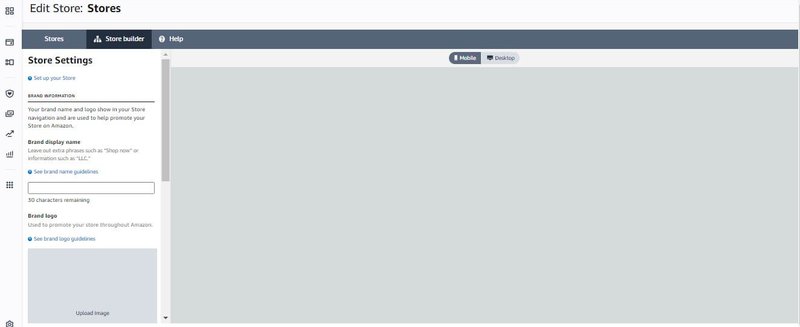
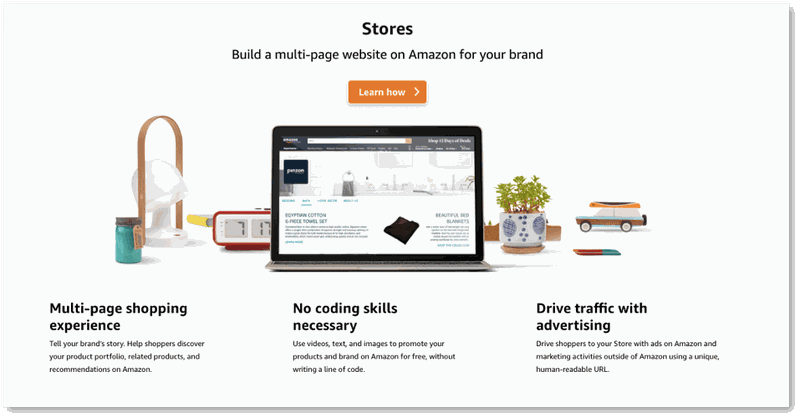



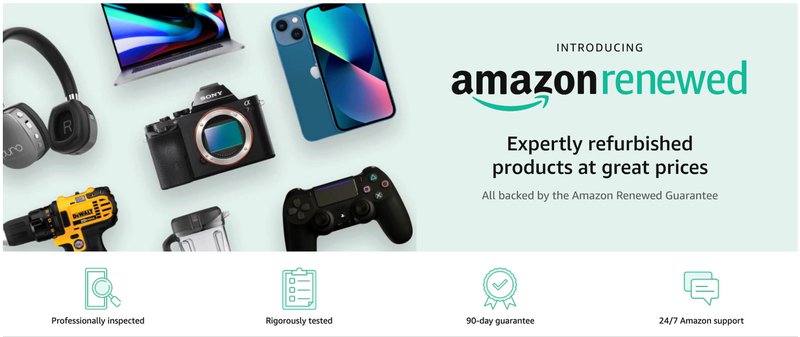
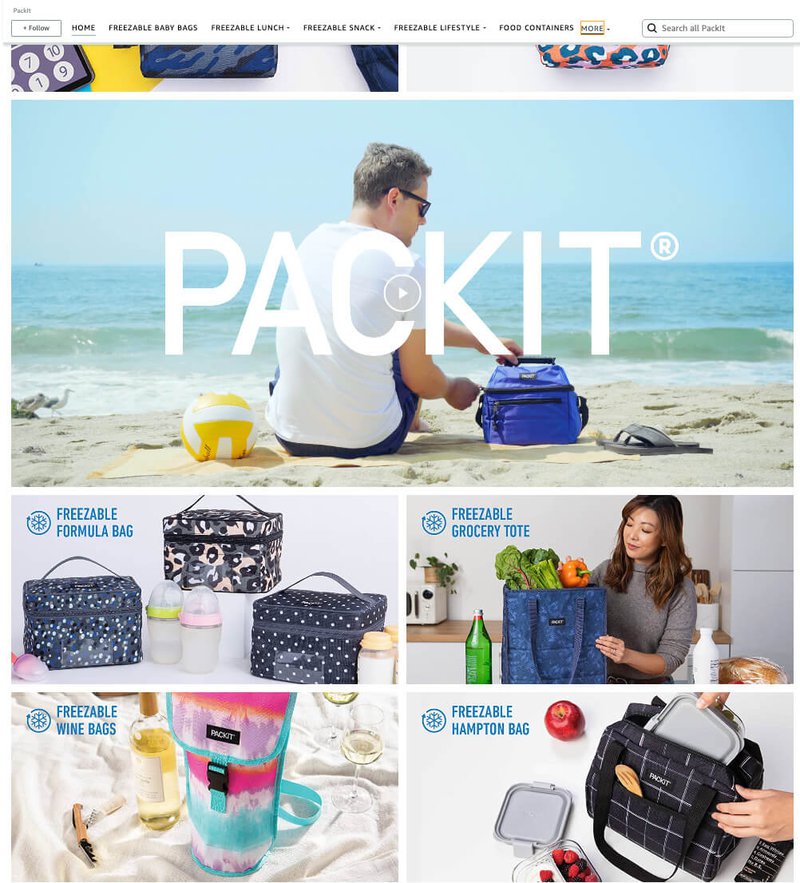
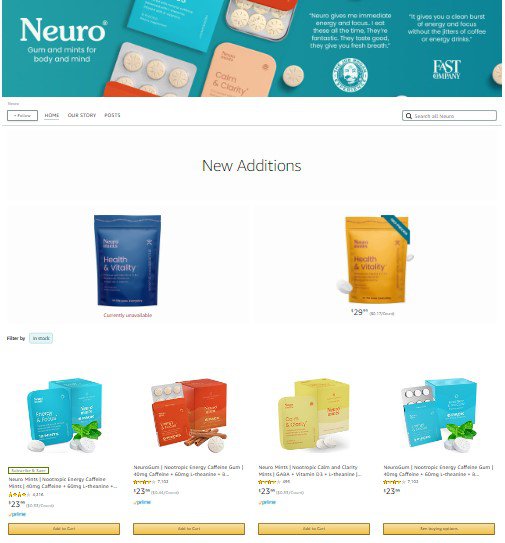

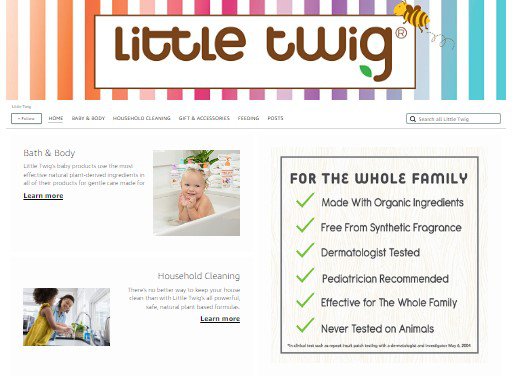


![Amazon Influencers: Best Ones to Work With + 5 Easy Ways to Find them [{year}]](https://entail.mayple.com/en-assets/mayple/fit-in/280x280/63d7e67372a499e8d5a7f458_amazoninfluencers1_871022271cf18984e4758a4f07c692a7_2000-1699518567706.jpg)

